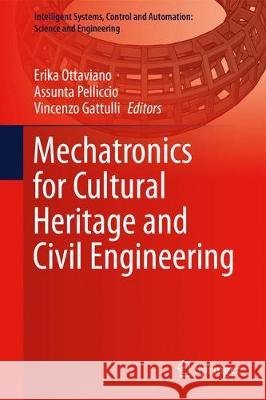Mechatronics for Cultural Heritage and Civil Engineering » książka
topmenu
Mechatronics for Cultural Heritage and Civil Engineering
ISBN-13: 9783319686455 / Angielski / Twarda / 2018 / 373 str.
Kategorie:
Kategorie BISAC:
Wydawca:
Springer
Seria wydawnicza:
Język:
Angielski
ISBN-13:
9783319686455
Rok wydania:
2018
Wydanie:
2018
Numer serii:
000335237
Ilość stron:
373
Waga:
0.77 kg
Wymiary:
24.13 x 17.04 x 2.59
Oprawa:
Twarda
Wolumenów:
01











